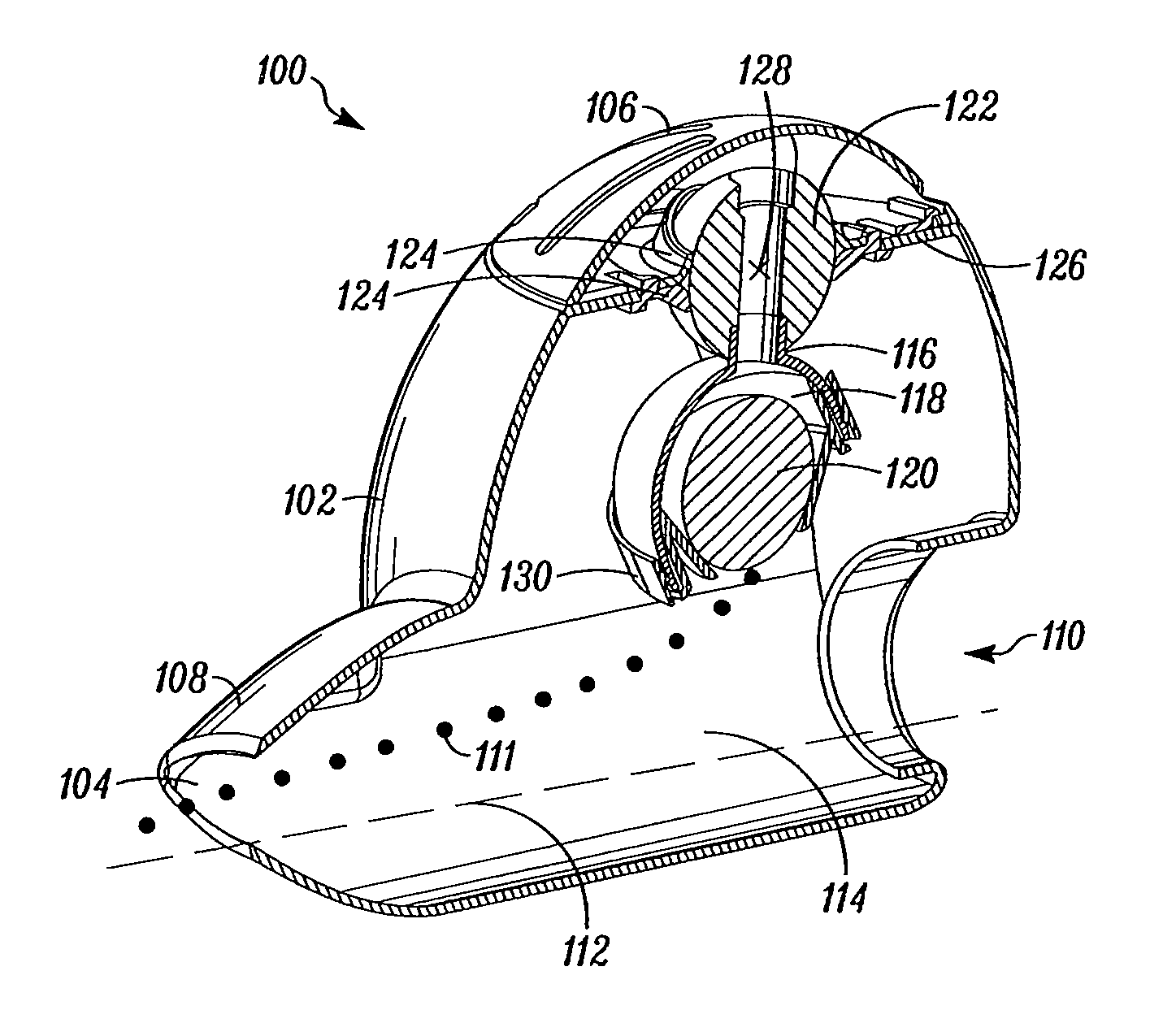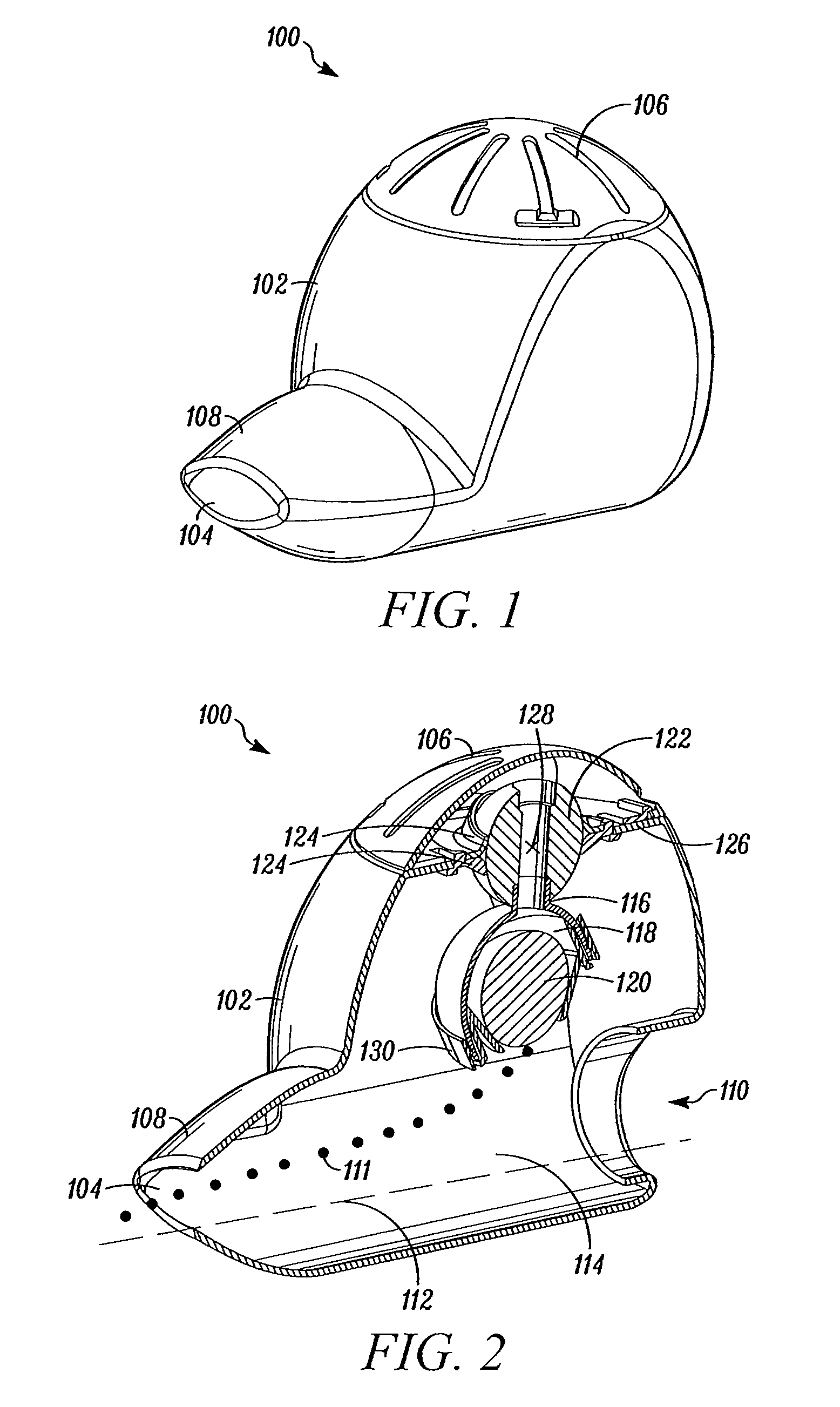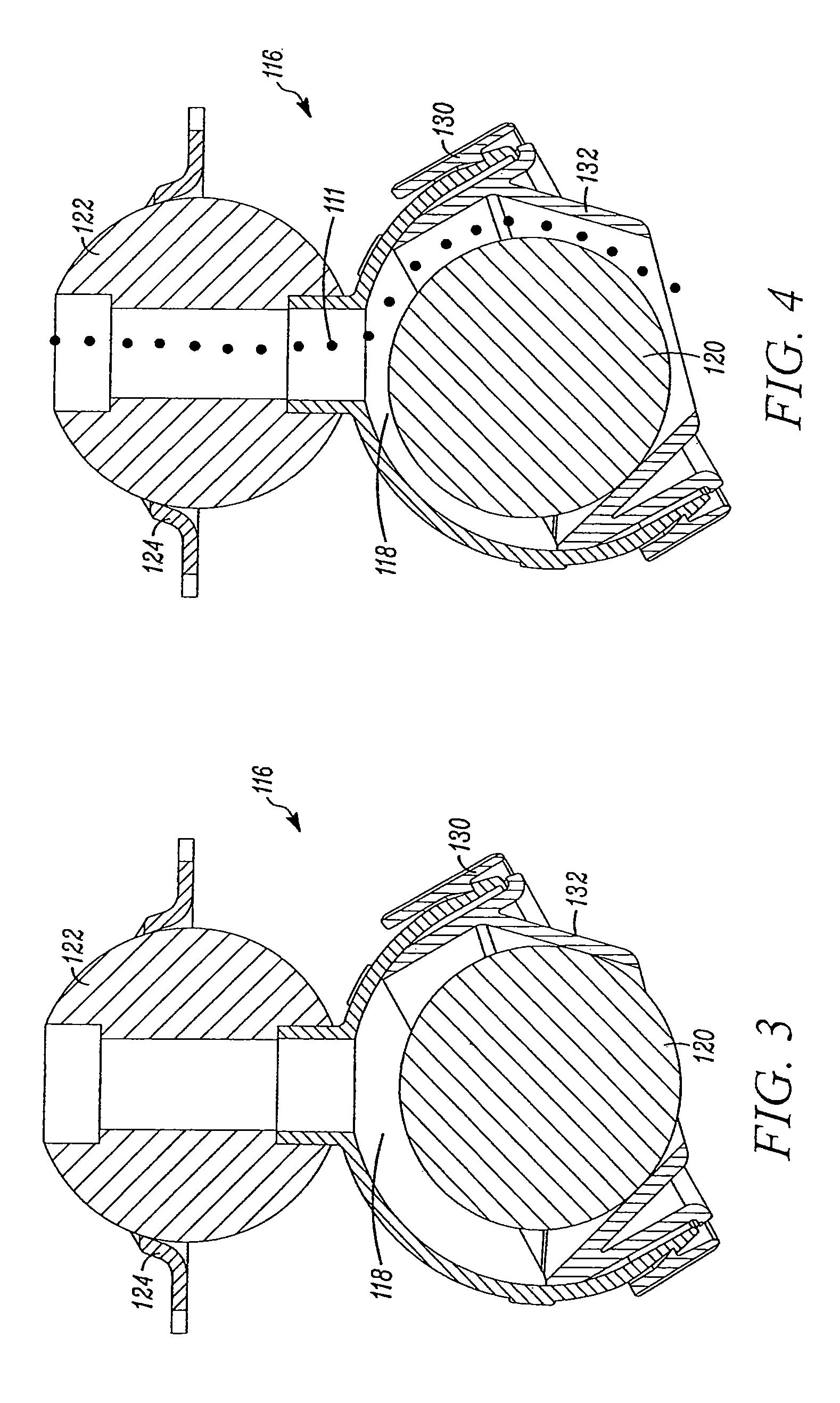Oscillating positive expiratory pressure device
a positive and expiratory pressure technology, applied in the field of expiratory treatment devices, can solve the problems of affecting the bronchial obstruction, splitting open obstructed airways, and insufficient single cough to clear obstructions,
- Summary
- Abstract
- Description
- Claims
- Application Information
AI Technical Summary
Benefits of technology
Problems solved by technology
Method used
Image
Examples
first embodiment
[0066]Referring to FIGS. 1-5, an OPEP device 100 is shown. In general, the OPEP device 100 comprises a housing 102 having an interior chamber 114, a chamber inlet 104, and a chamber outlet 106. The housing 102 may also be associated with a mouthpiece 108. Although the mouthpiece 108 is shown as being fixedly attached to the housing 102, it is envisioned that the mouthpiece 108 may be removable and replaceable with a mouthpiece 108 of a different size or shape. Alternatively, other user interfaces, such as breathing tubes or gas masks (not shown) may be associated with the housing 102. Preferably, the housing 102 is openable so that the chamber 114 and the parts contained therein can be periodically accessed, cleaned, replaced, or reconfigured. The housing 102 may be constructed of any durable material, such as a polymer (e.g., Acrylonitrile butadiene styrene).
[0067]In FIGS. 1-2, the housing 102 and the chamber 114 are generally spherical in shape. However, a housing of any shape cou...
second embodiment
[0081]Turning to FIG. 8, a cross-sectional perspective view of an OPEP device 200 is shown. In general, the OPEP device 200 comprises the same components as the OPEP device 100. More specifically, the OPEP device 200 comprises a housing 202, a chamber inlet 204, a chamber outlet 206, a mouthpiece 208, a nebulizer port 210 having a one way valve (not shown), a chamber 214, and a channel assembly 216. As with the OPEP device 100, the channel assembly 216 in the OPEP device 200 is connected to the housing 202 by a ball and socket joint, comprising a pair of socket walls 224 and a rotation ball 222.
[0082]Referring to FIGS. 8-9, the OPEP device 200 differs from the OPEP device 100 in that a user does not have to open the housing 202 to adjust the magnitude and direction of the normal force from the channel 218 acting on the air flow regulator 220. Rather, the OPEP device 200 comprises a gear train 234 that is connected to a truncated cone 232 and that extends through the rotation ball 22...
third embodiment
[0083]Turning to FIGS. 10-21, an OPEP device 300 is shown. The OPEP device 300 comprises a housing 302, a chamber inlet 304, a chamber outlet 306, and a mouthpiece 308. Although the OPEP device 300 is not shown as having a nebulizer port for connection to a nebulizer, a nebulizer port could be included in the same manner as described above in relation to the OPEP device 100.
[0084]Referring to FIG. 11, a cross-sectional view of the OPEP device 300 is shown. The OPEP device 300 includes a channel assembly 316 comprising an air flow regulator 320, a cup 336, an inner sphere 338, and an outer ring 340. A channel 318 is defined within the cup 336 and the inner sphere 338. As shown, the channel assembly 316 is moveably connected to the housing 302 by a first gimbal 342 such that the channel assembly 316 is rotatable about an axis defined between the first gimbal 342. Likewise, referring to FIG. 12, the inner sphere 338 is connected to the outer ring 340 by a second gimbal 344, offset nine...
PUM
 Login to View More
Login to View More Abstract
Description
Claims
Application Information
 Login to View More
Login to View More - R&D
- Intellectual Property
- Life Sciences
- Materials
- Tech Scout
- Unparalleled Data Quality
- Higher Quality Content
- 60% Fewer Hallucinations
Browse by: Latest US Patents, China's latest patents, Technical Efficacy Thesaurus, Application Domain, Technology Topic, Popular Technical Reports.
© 2025 PatSnap. All rights reserved.Legal|Privacy policy|Modern Slavery Act Transparency Statement|Sitemap|About US| Contact US: help@patsnap.com



